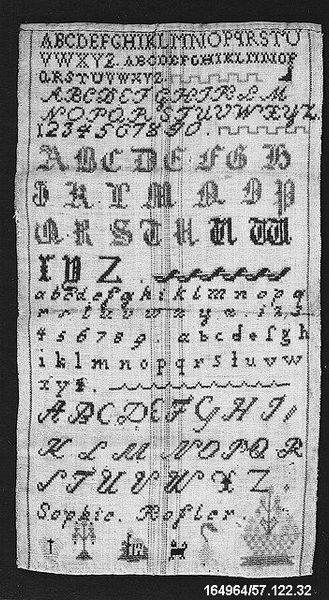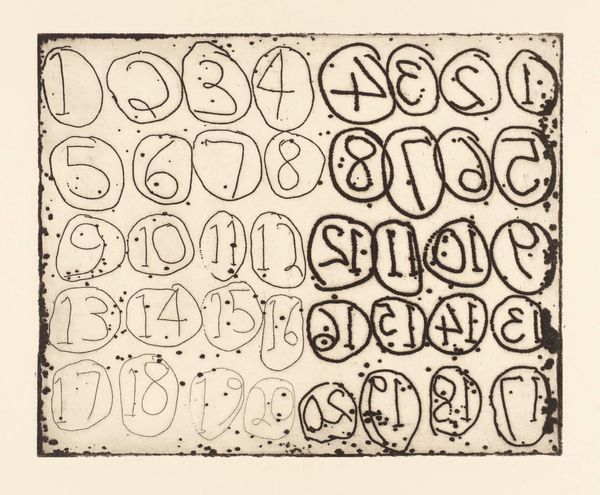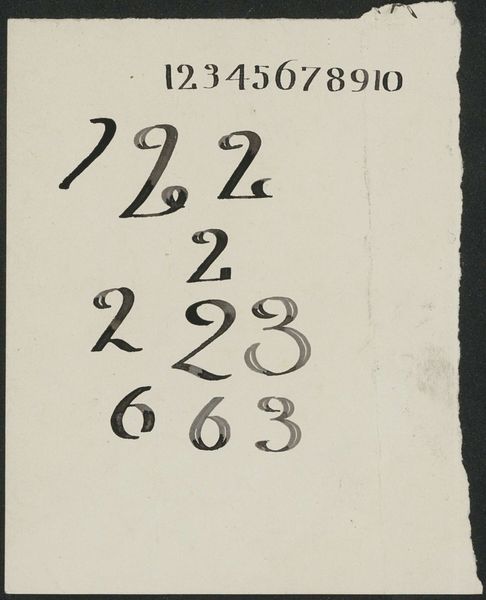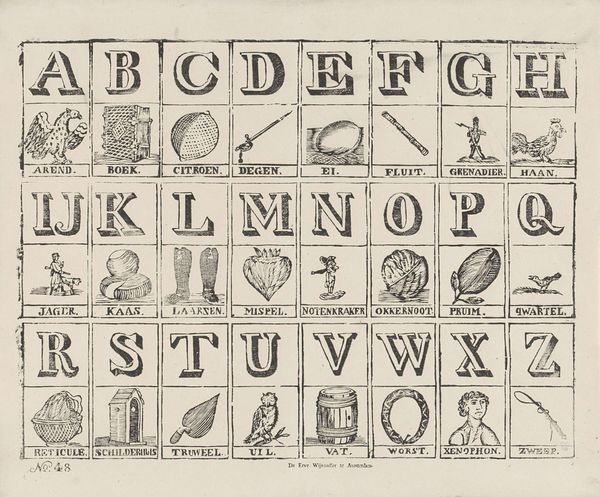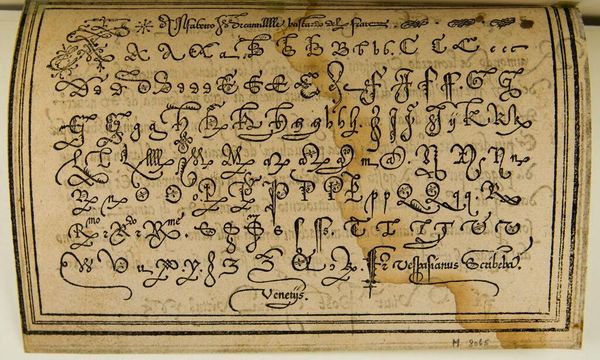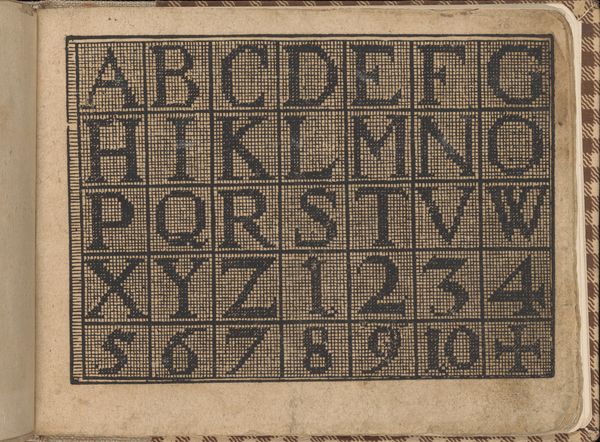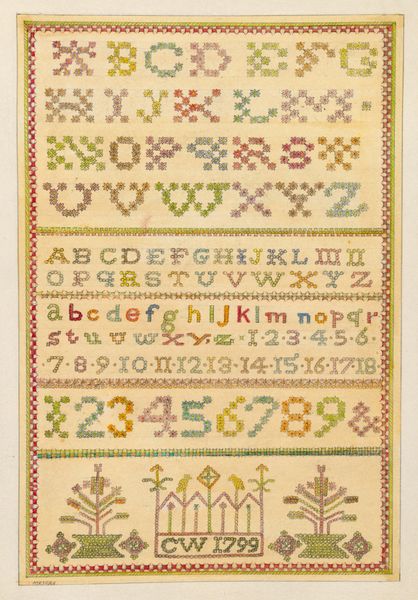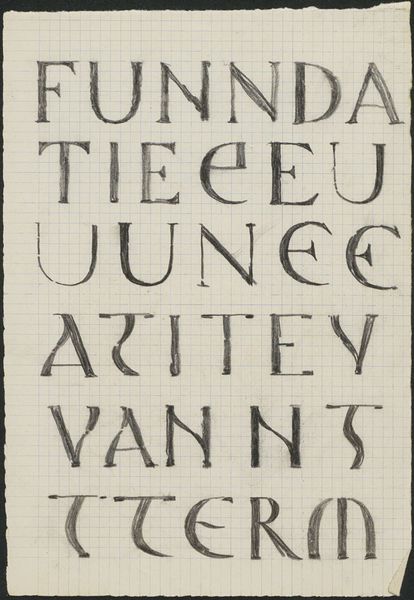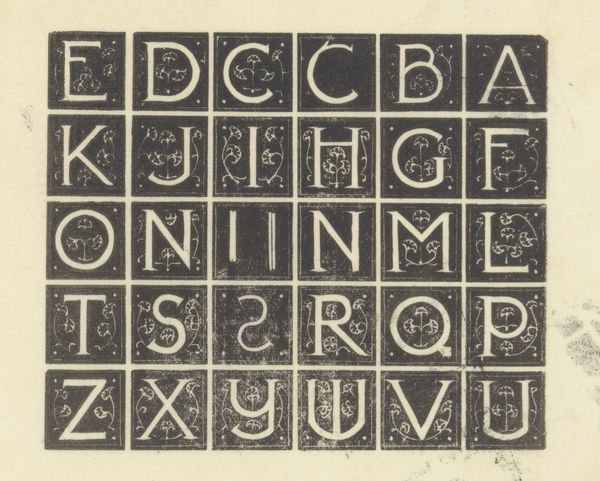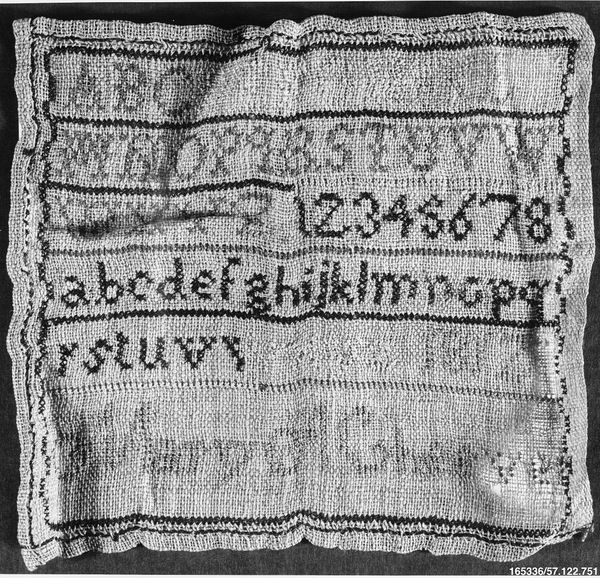
fibre-art, textile
#
fibre-art
#
textile
#
decorative-art
Dimensions: 12 3/8 x 10 7/8 in. (31.4 x 27.6 cm)
Copyright: Public Domain
Editor: This is an embroidered sampler, made in 1840 by Elizabeth Coons, who lived in Halfmoon, Saratoga County, New York. It's primarily a textile piece. It looks very intricate and neat, and in the bottom, it indicates that Elizabeth was twelve years old when she completed it. What's striking to you when you look at it? Curator: What strikes me is the powerful story of female education it silently conveys. Samplers like these were crucial to a young girl's education, especially in the 19th century United States. Think of them as more than just decorations; they were a public demonstration of a family's commitment to schooling, showcasing their daughter’s literacy, skill, and discipline. Editor: So, it was less about artistic expression and more about… societal expectations? Curator: Precisely. The repetitive nature, the focus on alphabets and numbers… These were fundamental skills required for managing a household and engaging in religious practice. More subtly, creating this required long periods of painstaking labor, teaching young girls obedience and restraint – qualities valued at the time. Editor: I see it now. It's like a tangible record of social pressures on young women, translated into needlework. How did institutions like schools impact their creation? Curator: Schools often dictated patterns, influencing what got stitched and, therefore, which values were perpetuated. Displaying a sampler like this served a public function; it signalled status and domestic competence, shaping perceptions of family identity. Editor: It's interesting to view something seemingly so personal through this lens of public performance. Curator: Indeed. Reflecting on Coons’ sampler broadens how we understand women’s artistic endeavors, moving beyond individual talent and recognizing their deep involvement in broader social and educational landscapes. This shifts our appreciation, adding layers to its inherent artistic merit. Editor: I never thought of a simple needlework as a statement about societal expectations and status.
Comments
No comments
Be the first to comment and join the conversation on the ultimate creative platform.
